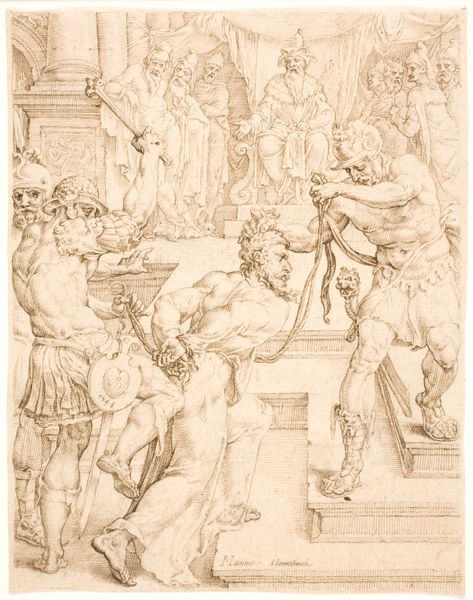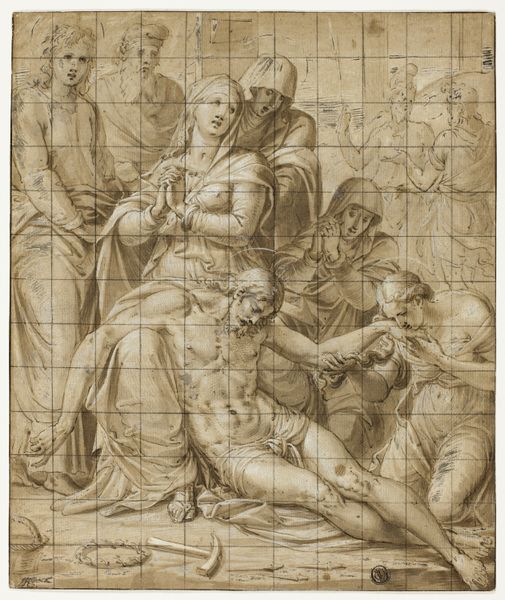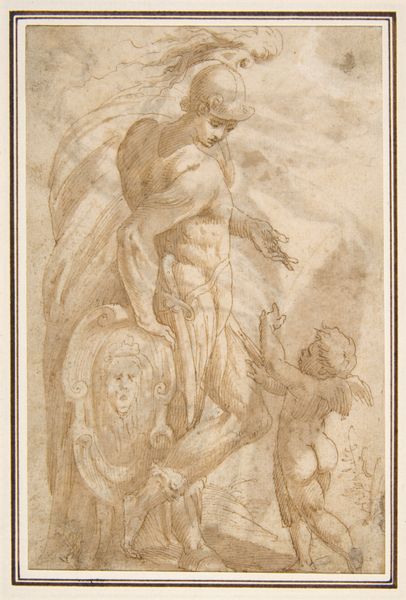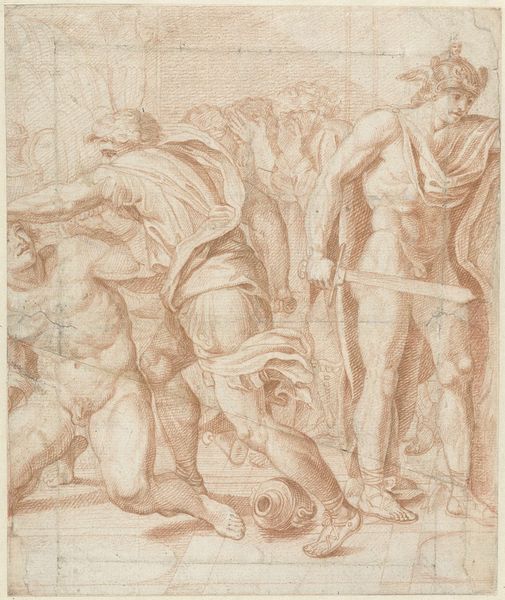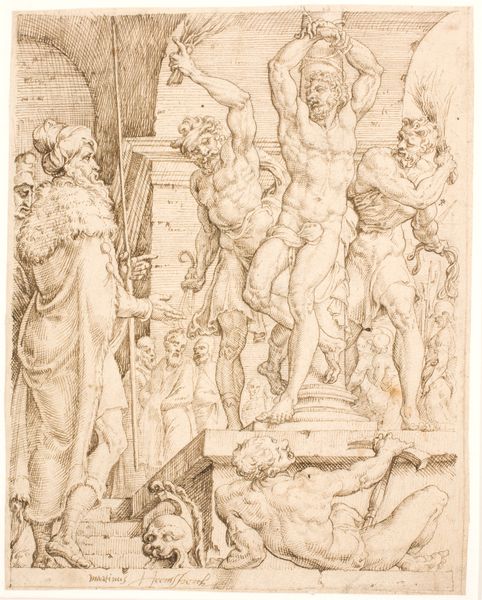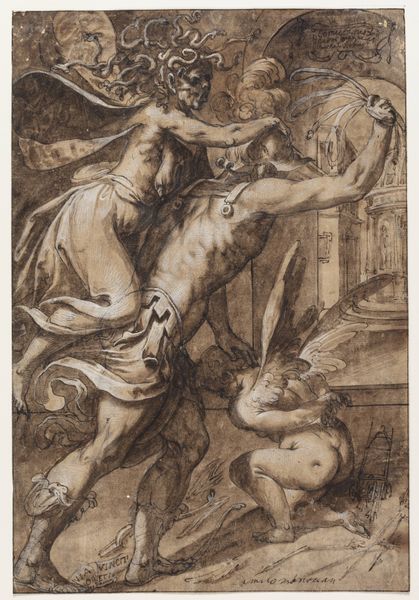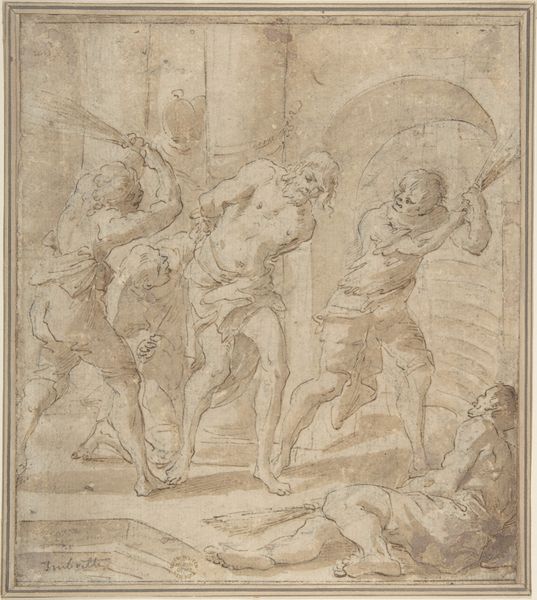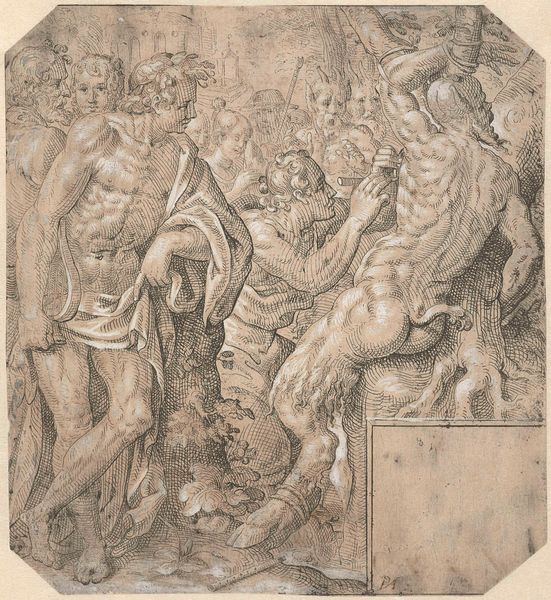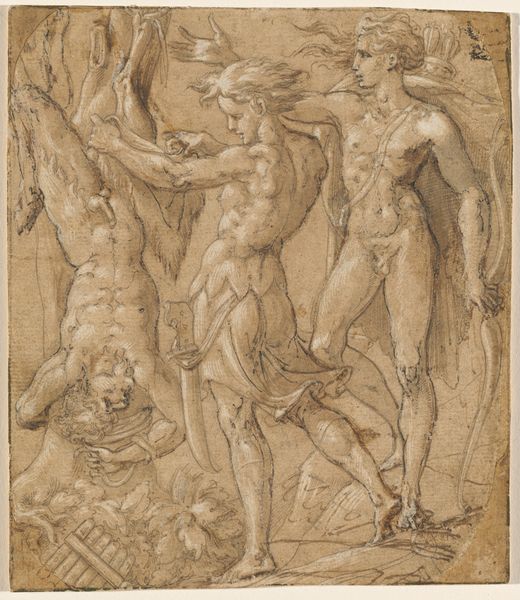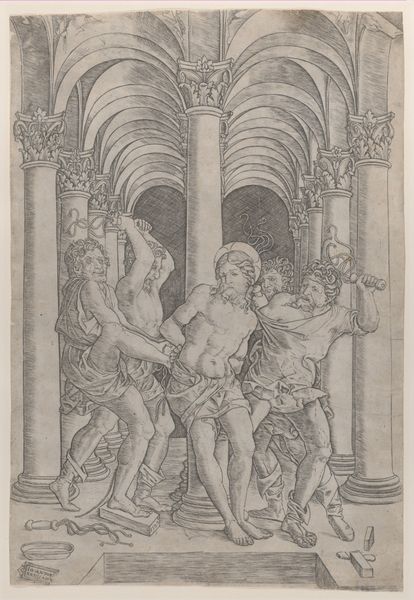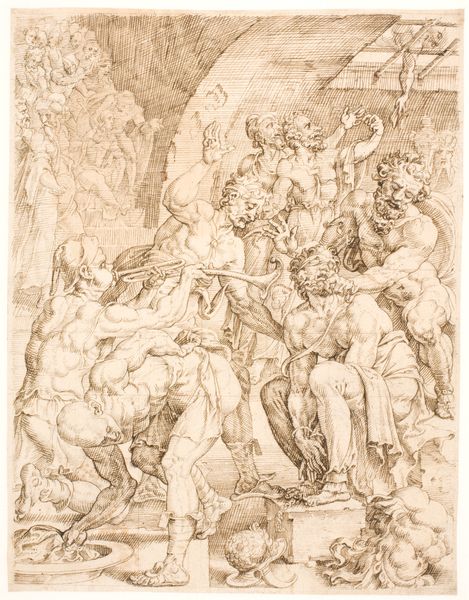
drawing, print
#
drawing
#
toned paper
#
light pencil work
# print
#
pencil sketch
#
charcoal drawing
#
personal sketchbook
#
coffee painting
#
underpainting
#
men
#
portrait drawing
#
watercolour illustration
#
watercolor
#
christ
Dimensions: 13-3/8 x 9-1/4 in. (34.0 x 23.5 cm)
Copyright: Public Domain
Curator: "Scourging of Christ," dating from 1500 to 1600, presents a raw and brutal depiction. What strikes you first about it? Editor: Its chaotic energy. The figures are rendered with such frenetic lines. There's a real sense of movement, almost violence, in the strokes. The men, specifically. Curator: It is quite graphic. We can locate the drawing in a very specific time—we understand the piece is currently held at the Metropolitan Museum of Art, its power lies in its brutal honesty about pain and suffering. How does this relate to today's visual culture where violence is both overexposed and often sanitized? Editor: Exactly! This feels different because the tormentors aren’t faceless, nameless aggressors. Instead, they seem possessed, contorted by something beyond just physical cruelty. There is context behind the madness portrayed that we are only briefly made privy to, as outsiders. Curator: Absolutely. The emphasis shifts from Christ's suffering to the tormentors’ active participation. What about the grid that’s faintly visible beneath the figures? Do you believe it acts only as guidance? Editor: Yes, the grid provides structure beneath all the visible emotional mayhem that's displayed in the strokes of watercolour. It's that strange tension that’s compelling here. This artistic element adds so much in this artwork, despite being so subtle. What this all means within the intersections of power, religion, and history opens multiple narratives for engagement. Curator: It offers structure amid chaos. These were preparatory aids, or perhaps this piece was part of an exploration, by an unknown artist, into ideas about judgement. This brings to mind larger socio-political considerations around institutional structures and violence—is the structure an inherent part of violence? Editor: The idea of unseen frameworks upholding systems of violence definitely resonates here. Seeing the figures almost struggling *against* that underlying order highlights that very struggle and creates an interesting contrast. Curator: It does beg significant ethical and representational questions in our current moment of reassessing historical art through contemporary theoretical and political lenses. Editor: Agreed. It’s a piece that reminds us that art, even art depicting religious scenes, is never neutral. It reflects and refracts the values and anxieties of its time and, often, of ours. Curator: Well, looking at “Scourging of Christ” has revealed both its historical context and its continued relevance in today's social and political discourse. Editor: Absolutely; it's a chilling work that stays with you, provoking uncomfortable but necessary questions.
Comments
No comments
Be the first to comment and join the conversation on the ultimate creative platform.
